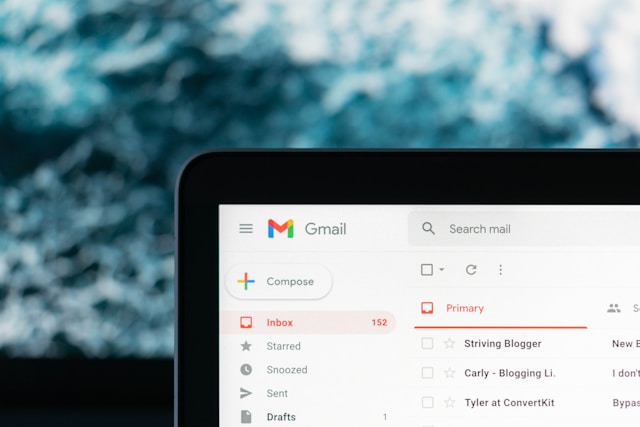Maximizing Your Email Marketing Potential: Features Every Marketer Should Consider

Maximizing Your Email Marketing Potential: Steps Every Marketer Should Consider
Email is expectedly one of the most effective marketing tools out there, which means it needs to consistently work at its best — from navigating SPAM filters to engaging your clients and building loyalty and fruitful relationships.
One email monitoring service (founded back in 1993!) predicts that there will be an astounding 4.37 billion email users, which is about 50% of the global population. That said, email is an ideal platform for companies looking for a straightforward and truly effective way to reach your customer.
Beyond that, email is a great way to interact with your customers, build leads, establish brand awareness, not depending on whether you are a small company or a large corporation. In fact, 79% of marketers prove that!
Some doubt the efficacy of email marketing though because customers are typically finding themselves scrolling through multiple emails without even opening them. And due to the appearance of advanced spam filters, marketers face even a more remarkable challenge of getting through the noise of spam messages and getting that long-awaited opening.
Therefore, email is an extremely effective way to market your business, yet it works only if you use it wisely. But how to do that? In the article, we’ll explore a few critical steps.
Come up with a clear campaign plan
Careful planning is crucial to experienced and junior marketers alike. Even though planning can sometimes be barely possible due to all sorts of unpredictable circumstances, having a strong strategy in mind is crucial.
Start with defining the goals and expectations you’ll have from an email campaign. This will determine the email type you’’l need to send — be it a newsletter, a promotional, lead nurturing, welcome, thank you, or any other type of email. Beyond that, this campaign plan will help you come up with the optimal timing, appropriate CTAs, and content topics.
Think about the software that works best for you
Do you remember the days of managing subscriber lists and sending emails with Excel spreadsheets and Outlook alone? Those days are way behind. Even tiny firms nowadays require something far more effective.
Since email marketing involves much more than just blasting out messages in the hopes that a select few may result in lucrative clicks, you need to provide relevant material with genuine insight to stand out from the competition.
That said, you should provide value in your emails, and thus you should choose the most suitable solution for that need. To help you with just that, consider the following questions:
- What characteristics are essential to you? Take into account the qualities you could require in order to focus your search. If your design support is minimal, you may find it useful to have a large template collection, like the one offered by Mailchimp. Other considerations include HTML editing, automation, and round-the-clock customer service.
- How many emails do you need to send? Some companies need to send an email to one group of subscribers consisting of as few as 50 people, while others have several thousands of subscribers to target their campaigns at. It’s important to consider your needs here because each email marketing software has its limits. For instance, Selzy’s platform allows up to 15,000 bulk emails, while Elastic Email allows sending up to 10,000, and Brevo’s solution allows up to 50,000 emails at once.
- Is it possible to combine the software with your CRM? Well, it obviously takes a lot of time to manually send emails and update lists; luckily though, there is an easy way to manage content and data, which may happen through an email marketing platform that interfaces with your Customer Relationship Management Software (CRM). For users of HubSpot’s platform, a popular way to do that is through the use use HubSpot’s native email marketing solution. But luckily, most of today’s email marketing solutions allow seamless integrations with any desired CMS of your choice.
Aim for segmentation
As suggested by the DMA UK’s Email Tracker, 2023 saw an upward trend in users finding commercial emails useful. Finally, right?

Marketers will obviously be relieved to hear this, but these numbers are not the product of generic content — that’s the result of wise, strategically implemented segmentation.
When working with email, you should remember that every subscriber is an individual with very specific interests, behavior traits, and demography, and preferecnes.To be more focused with the information, goods, and services you offer, you should segment your subscriber list into more manageable groups.
Basic segmentation could include things like region or gender, but lists based on past purchases and internet activity can — and should — be considerably more detailed.
Build lists based on your actual contacts
Since in email marketing it is essential — and most difficult — to prioritize quality over quantity, finding methods to fill the sales funnel with additional leads is one of each marketer’s main challenges. You can grow your email list strategically by using diverse marketing platforms, from social media and webinars to events, targeted ads, and lead forms on your website.
Employ some sort of validation to make sure that every contact on your list is genuine, has provided consent to receive emails from you, and has included their email address.
If you are unclear about how to work with this, the email marketing expert Gavin Llewellyn, suggests studying the rules for what kind of consent is appropriate in what region. Once you get it sorted out, and follow all rules carefully, your chances of avoiding spam complaints and preserving your email reputation become way higher.
Keep track of your achievements
No campaign is successful without measuring its results. Luckily, most email marketing software does offer strong analytics possibilities, including the ability to monitor your email marketing profit, potential return on investments, and of course click-through and open rates.
To efficiently measure the performance of your campaigns and make all the needed adjustments, be sure to tie your data to a specific timeline — such as the course of several days, weeks, months — and compare it.Examine the components of a successful email campaign and apply them to subsequent ones. You’ll have developed a really effective method over time.
Wrapping up
Obviously, email is not just a one-way street — it’s a two-sided complex relationship between the sender and the recipient. It’s not just about delivering content; you can also get some gold nuggets of insight by keeping tabs on opened emails, clicked links, and willingly shared info (like through surveys) from your contacts. This data becomes the groundwork for fine-tuning and enhancing your future initiatives.
One of your most effective methods for building deep relationships with both your target audience and current clients is email. You’ll offer yourself the best opportunity of achieving your company goals if you keep the aforementioned ideas in mind.
